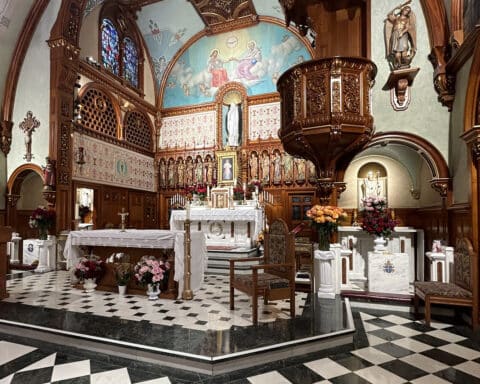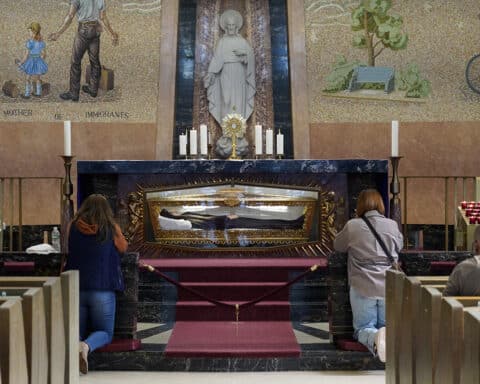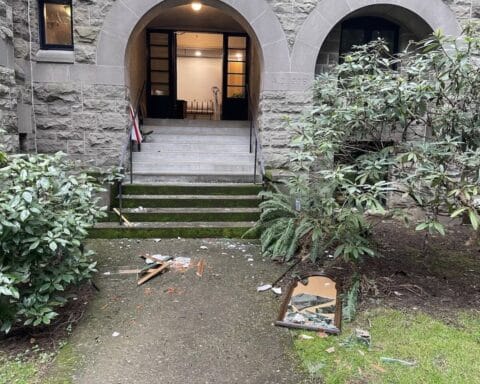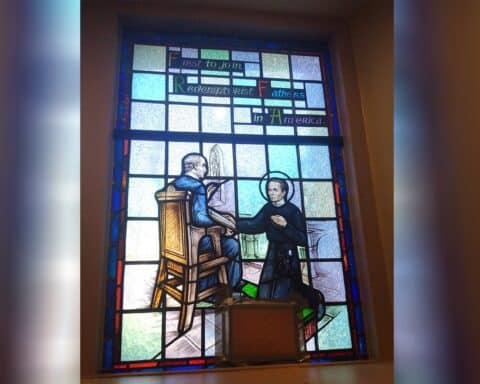Catherine Naja of suburban Pittsburgh started making a pocket shrine last fall, even though she has little experience in sewing anything. She cut out the pattern of a cross and hand stitched two layers of fabric to hold medals and other little religious items.

Her husband, Imad, laughed and asked what she was going to do with it. Did she plan to take it on vacation? When would they ever need one?
“I didn’t know,” she said. “But I couldn’t get the idea out of my heart. So I began working on one.”
Completing it became a small blessing during Lent when church doors were closed, she said. And the pocket shrine will continue to be part of her family’s prayer life to carry them through the rest of the shelter-in-place changes that have swept the world.
“I’ve always liked Catholic antiques, and I came across these pocket shrines a couple of times,” said Naja, whose family attends St. Bernard Church in Mt. Lebanon, Pennsylvania. “I’m so intrigued by the idea of people carrying them.”
Shrines from years past
Pocket shrines for centuries have been carried by Catholics who use them for private devotionals and reminders of their faith. There are inch-high statues, medals, scapulars, tiny crucifixes and little prayer cards tucked into metal or wood containers, pieces of cloth or folded leather. They’re often personalized with references to patron saints or particular devotions to Jesus, Mary, the Holy Family or the Holy Spirit.
Soldiers carried them in their pockets or in hollowed cartridge shells on their belts and turned to them for protection and comfort. They’ve been found on Civil War battlefields, and others were used frequently in World War I, World War II and other conflicts in the past 50 years. Soldiers carried them to battlefields on our own soil and in Europe, Asia and the Middle East.
“It was a comfort to them when they weren’t sure when they’d be able to step into a church,” Naja said. “They were away from their families and wanted something to keep with them when they prayed. They served as a reminder that God is wherever we happen to be. I just loved that idea and wanted to make one for my family.”
No one knows who once carried the pocket shrines that are kept at St. Emma Monastery in Greensburg, Pennsylvania. Mother Mary Anne Noll, prioress of the community of Benedictine nuns, speculates that they belonged to the founding sisters who in 1931 came to nearby St. Vincent Archabbey and College in Latrobe. Their work there supported the motherhouse, Abtei St. Walburga, in Eichstaett, Germany.
“They would have used them as objects of devotion,” she said.
Many are devoted to their patron St. Walburga, and one has a tiny vial that would have held the oil that exudes from her tomb. One is a devotion to her brother, St. Willibald, who became a bishop.
The shrines are made of wood and metal, and some have top screws or pieces of chains that suggest that they were attached to rosaries. Some open like lockets.
“These, and the ones soldiers carried, were the forerunners of the modern ones that you see in little plastic wallets, and those little coins that people are carrying now,” Mother Mary Anne said.
A time to grow
The one Naja made is in the shape of a cross that can be folded and buttoned up. Inside are medals for each family member. The medal of St. Michael is for Noah Michael, 8, and a St. Clare medal is for Isabelle Claire, 5. For Pia Mary Gabrielle, 3, there are medals for St. Pio and the angel Gabriel. Teresa Siena, who is 10 months old, is represented by St. Thérèse of Lisieux.
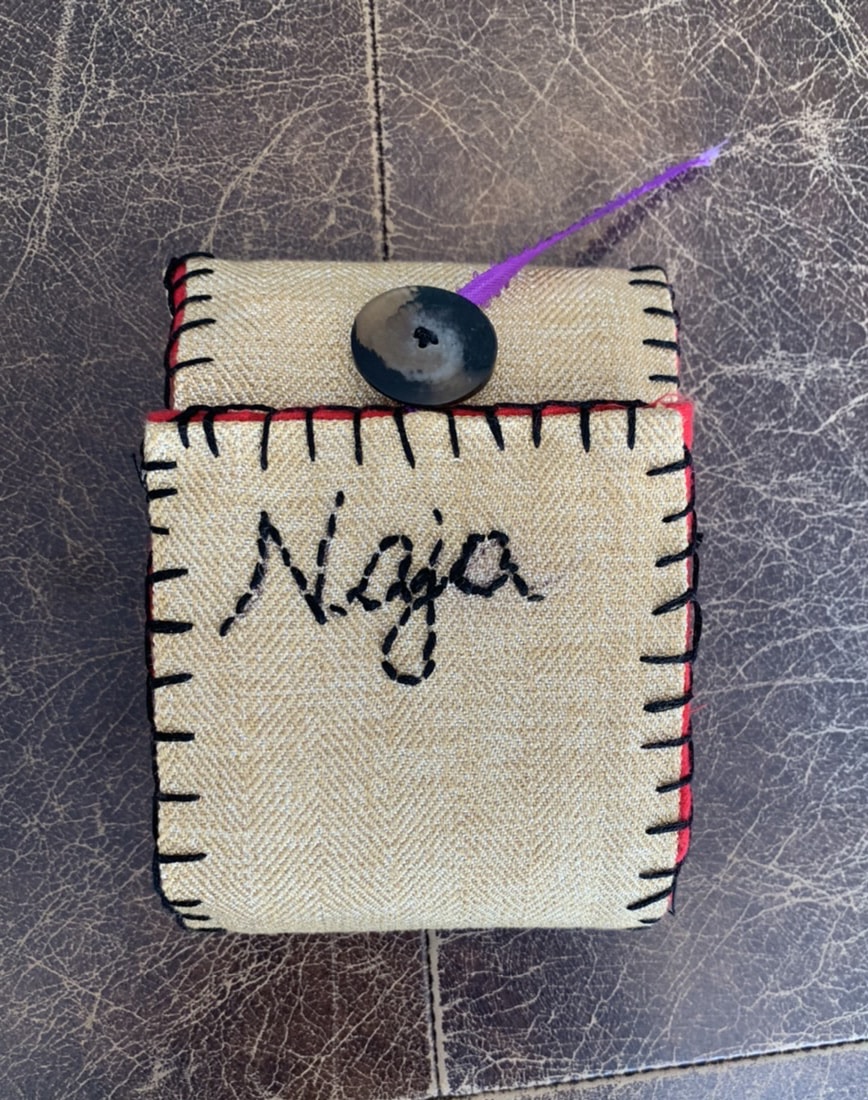
“I have a miraculous medal for 7-year-old Evangeline Grace, because I always joke that Mary’s middle name was Grace, too,” Naja said.
Naja’s medal is St. Catherine, and her husband’s is St. Dominic, his confirmation name when he entered the Church.
She added a Holy Family medal passed down from her father, part of a scapular, a Lamb of God pin, a tiny flame of the Holy Spirit and a stone relic from the cave in Italy where St. Michael appeared.
“When I started on this project, I never dreamed that we would ever find ourselves in this situation,” Naja said. “I thought, ‘We’re not soldiers. We’re not going anywhere without our church.’ And now the churches are locked. We can’t sit with the Blessed Sacrament. We can’t go to communion or confession. I never could have imagined a time like this that would ever come into our lives. But we know that the Holy Spirit is still moving us and tugging at our hearts even when church doors have been closed. We know that this time away will make us grow in even deeper love for Jesus in the Blessed Sacrament.”
Maryann Gogniat Eidemiller writes from Pennsylvania.


